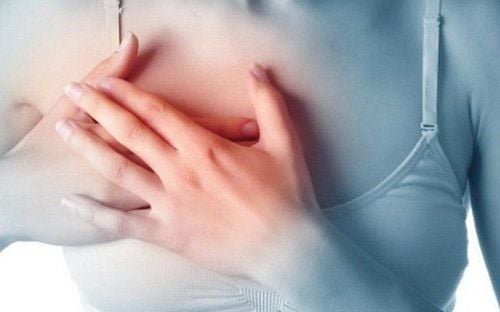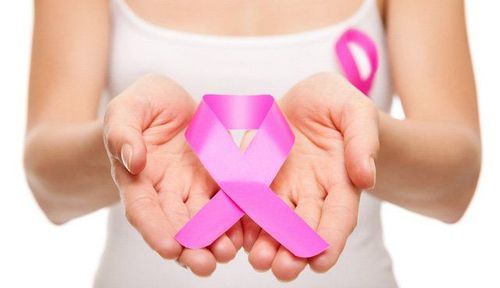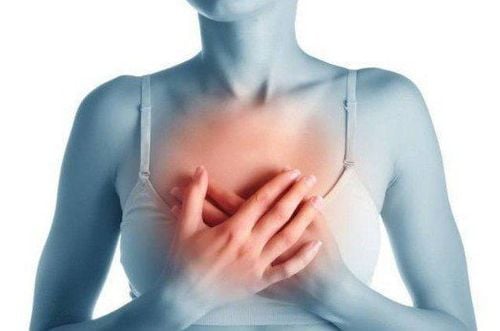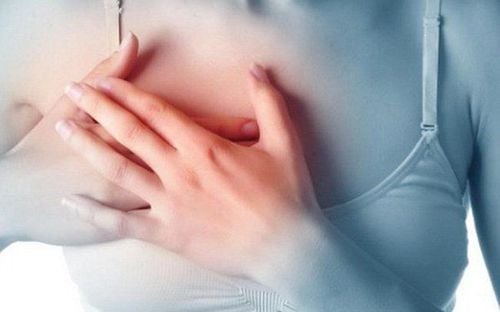This is an automatically translated article.
A breast biopsy is a procedure where breast tissue is removed and examined under a microscope to find breast cancer. There are different types of breast biopsies, and each will be appropriate for each patient. In the article below, we will give you the most detailed information about this technique.1. What is a breast biopsy?
A biopsy is a procedure in which a small sample of tissue is taken and examined under a microscope in a laboratory to detect abnormalities of certain diseases.For a breast biopsy, breast tissue can be removed with a special biopsy needle or during surgery. Performing a breast biopsy helps your doctor check to see if a lump in your breast is cancerous.
However, it should be noted that not all tumors are cancerous. Breast lumps can have many causes, not necessarily cancer. So a breast biopsy helps to determine whether a tumor is malignant (cancerous) or benign (non-cancerous).
Trắc nghiệm: Những lầm tưởng và sự thật về ung thư vú
Ung thư vú có tỷ lệ tử vong cao nhất ở nữ giới khiến họ rất lo sợ bản thân mắc phải căn bệnh này. Tuy nhiên, không ít chị em có những hiểu biết thái quá về ung thư vú. Thử sức cùng bài trắc nghiệm sau sẽ giúp bạn loại bỏ được những nghi ngờ không đúng về căn bệnh này.
Bài dịch từ: webmd.com
2. Why do you need a breast biopsy?
A breast biopsy may be done to:Check for a palpable or palpable lump in the breast. Check for an abnormality found on mammograms, such as calcium deposits in breast tissue (mammary gland calcifications) or fluid-filled lumps (cysts) Helps evaluate nipple problems breast, such as bleeding from the nipple Find out if a breast lump is breast cancer (malignant) or non-cancerous (benign) Determine what is causing a lump or other suspicious area in the breast breast (caused by cancer or another less serious problem).
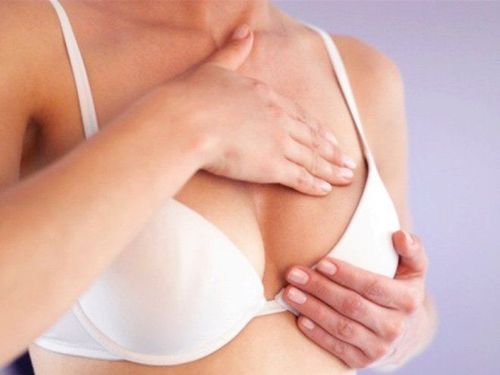
3. Indicated cases to perform breast biopsy
The doctor will ask the patient to perform a breast biopsy if the results of clinical examination, mammogram or breast ultrasound reveal one of the following abnormalities:A lump appears in the breast Disorder breast tissue structure Abnormal symptoms in the nipple, such as scaly skin, bleeding, stretching or indentation
4. Types of Breast Biopsy
There are different types of breast biopsies. The type of biopsy to be performed will depend on the location and size of the breast tumor or suspected area.Types of breast biopsies include:
Fine-needle aspiration cytology: A doctor inserts a needle into the tumor and removes some fluid for testing. An FNA biopsy helps check if the tumor is a cyst (containing fluid) or a solid tumor. Core Needle Biopsy (CNB): Take samples with a hollow-core needle, each the size of a grain of rice. Spatial Needle Biopsy: The patient will be placed prone on a table with an electrically powered hole that can be raised. The patient's chest is fixed between two metal plates under the table. The doctor will make a small incision and take a sample for testing with a specialized needle or aspiration detector. Core needle biopsy as indicated by MRI: The patient is in the prone position and the chest is placed in a depression on the table. Mammograms are taken by an MRI machine, which helps the doctor identify the tumor. The doctor will make a small incision and take a sample with a core needle. Open biopsy (surgery): The doctor makes a small incision in the breast and removes part or all of the tumor. The removed breast tissue will be taken to the laboratory, the test results will show whether the cancer has been removed enough. The location of the tumor will be marked with a small piece of metal so it can be easily tracked in the future. Stereotactic biopsies: With this method, a 3D image of the breast is generated using a computer and mammogram results. The 3D imaging will then guide the biopsy needle to the exact location of the breast lump or suspicious area. The tissue samples taken will be tested to look for cancer cells. Ultrasound-guided biopsy: This method uses an ultrasound image of the breast tumor, which helps guide the needle to the correct biopsy site. Breast biopsy technique with vacuum-assisted suction under Stereotactic positioning: This technique uses a large biopsy needle with a size of 12 G or more, combined with vacuum suction, so it helps to get many samples. thereby increasing the probability of success. In addition, this technique is also less invasive than the open biopsy method: The incision site does not require any recovery sutures, no special care, and patients can return to their normal daily lives immediately. tomorrow. In addition, the placement of markers to mark the intervention site is carried out right in the procedure to help manage the lesions after the test results are more favorable.
5. Risks of a Breast Biopsy
Any type of procedure carries certain risks. Breast biopsies are considered a relatively safe procedure, but they can still pose some risks:Bruising and mild pain at the biopsy site Prolonged bleeding from the biopsy site Proximal infection biopsy site
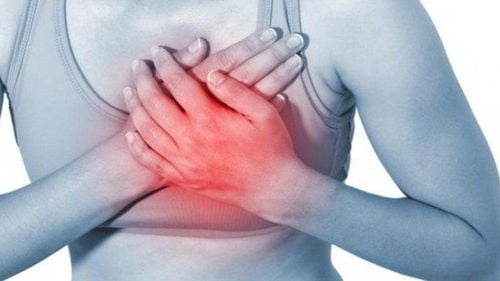
6. Procedure for performing a breast biopsy
6.1 Preparation for Breast Biopsy Before performing a breast biopsy, the physician will ask the patient about his/her medical history and perform a physical examination. You will need to sign a consent form to have a breast biopsy. You should read it carefully and ask any questions if you do not understand. In the case of general anesthesia, you should not eat or drink anything for 8-12 hours before the breast biopsy. Do not use lotions, creams, powders, deodorants, or perfumes on your arms, armpits or breasts on the day of the procedure Tell your doctor if you are pregnant or think you may be pregnant Tell your doctor if you are allergic or sensitive to any medications, latex, dressings and anesthetics. if you are taking any medications, including over-the-counter and prescription drugs, blood thinners such as aspirin, ibuprofen, vitamins, herbs and other supplements; Ask your doctor if you need to stop taking your medicine before the biopsy. 6.2 During a Breast Biopsy A breast biopsy can be done in a hospital or in a doctor's office. Some biopsies require only local anesthesia, while others may require general anesthesia.A breast biopsy will be done according to the following procedure:
You will be asked to remove clothing from the waist up and to wear a gown that opens up the front. After that, you will be placed on the bed, the doctor will clean, disinfect the breast area and inject numbing medicine for you. The doctor will make a small incision in the breast, in the area to be biopsied. Then, use the ultrasound machine to guide the biopsy needle to the location where the tissue sample should be taken. After the tissue samples and cells are removed, they will be sent to a laboratory to look for cancer. After taking the tissue sample, the doctor will remove the needle and apply a bandage at the biopsy site to stop the bleeding. The biopsy site may not need stitches. 6.3 After performing a breast biopsy Except for surgical biopsies, other types of biopsies do not require the patient to stay in the hospital for observation. After the biopsy is done, you can go home and wait for the test results. Results are usually available within a few days of analysis.
You need to take good care of the biopsy site by cleaning and changing the dressing regularly to avoid infection. Your doctor will give you specific instructions on how to care for your wound. Besides, you also avoid overexertion, which puts pressure on the wound. This takes a long time to heal and can lead to other serious complications.
You can also use non-aspirin pain relievers such as paracetamol and apply a cold compress to reduce swelling. If you develop symptoms such as a fever above 37°C, heat, redness, or discharge at the biopsy site, you should tell your doctor right away as these are signs of an infection.
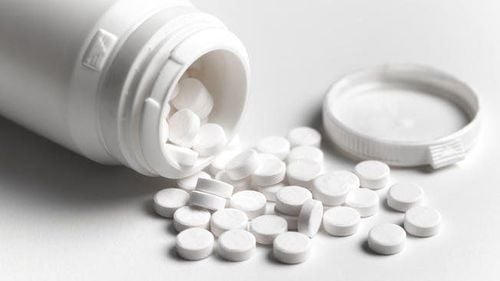
7. Meaning of Breast Biopsy Results
The results of a breast biopsy may show the following:7.1 Normal Results No abnormal cells or cancer were found.
7.2 Abnormal results There are abnormal changes in the breast, but it is not cancerous: Fluid-filled cysts, calcifications in breast tissue, breast lobules, breast lobular enlargement (round tumor, with palpable), fibroids and adenomas in the breast, fat necrosis (round, hard lumps that appear due to damaged fatty tissues) Abnormal changes in the breast that may increase the risk of cancer include: atypical breast hyperplasia (ADH); atypical lobular hyperplasia (ALH); Lobular carcinoma in situ (LCIS) Detects two main types of cancer cells: Cancer in the milk ducts from the breast to the nipple, and lobular cancer in the lobules of the breast (where milk is produced). . To proactively protect their health, women over 20 years old should regularly self-examine their breasts by looking in a mirror to check that the breast is in a normal position, then raise both hands and put both hands on the hips to See breast condition when changing position. Besides, touching and pressing on the breast to check for lumps, swelling and pain. If you notice any abnormality in your breasts, you should see a doctor as soon as possible. Women over 35 years old should have regular breast exams every 3-6 months.
Breast biopsy with vacuum-assisted needle biopsy under stereotactic positioning helps to get accurate specimens, larger specimens than core biopsies, thus increasing the possibility of early breast cancer diagnosis. Currently, Vinmec International General Hospital is equipped with a synchronous biopsies system, ensuring high professional quality, early diagnosis of breast cancer since there are no symptoms. This is the most modern technique today, being deployed by Vinmec Times City (Hanoi) and very few hospitals in Vietnam.
Please dial HOTLINE for more information or register for an appointment HERE. Download MyVinmec app to make appointments faster and to manage your bookings easily.




